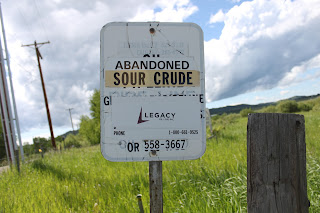Haida Gwaii Ocean Experiment Controversial
B. McPherson
Tinkering with the ocean's fertility can bring unintended consequences.
The Haida Salmon Restoration Corporation has paid about $2
million to dump 100 tonnes of iron sulphate into the Pacific Ocean 300 km
offshore of the Haida Gwaii (Queen Charlottes) Islands. This has resulted in a
giant algal bloom that can be seen from space.
The algae treat iron as a fertilizer and can divide rapidly
when given enough nutrients. The experiment has been deemed a success by the
salmon restoration corporation and reckless by others. The logic that an algal
bloom would enhance salmon health is unclear, as salmon are carnivores.
Iron sulphate has been proposed to geoengineer the world’s
oceans to push the algae to grow more rapidly, absorb more carbon out of the
air and help stave off global warming. On a very simple level, this might sound
like a good idea, but when an algal bloom(huge numbers of single celled plants)
dies, they are decomposed by oxygen eating bacteria. The removal of oxygen from
the water creates “dead zones” where no fish can live.
Another consideration in undertaking the fertilization of
the ocean is the uncontrolled nature of the dividing algae. Some ocean algae
are extremely toxic. Currently the phenomenon known as Red Tide is increasing
world wide. A combination of warmer water and increased nutrients from land
runoff – agricultural fertilizers and sewage – have pushed the season for Red
Tide to a year round danger.
Environment Canada is investigating the unauthorized
experiment reputed to have been carried out by Californian Russ George.

Comments
Post a Comment